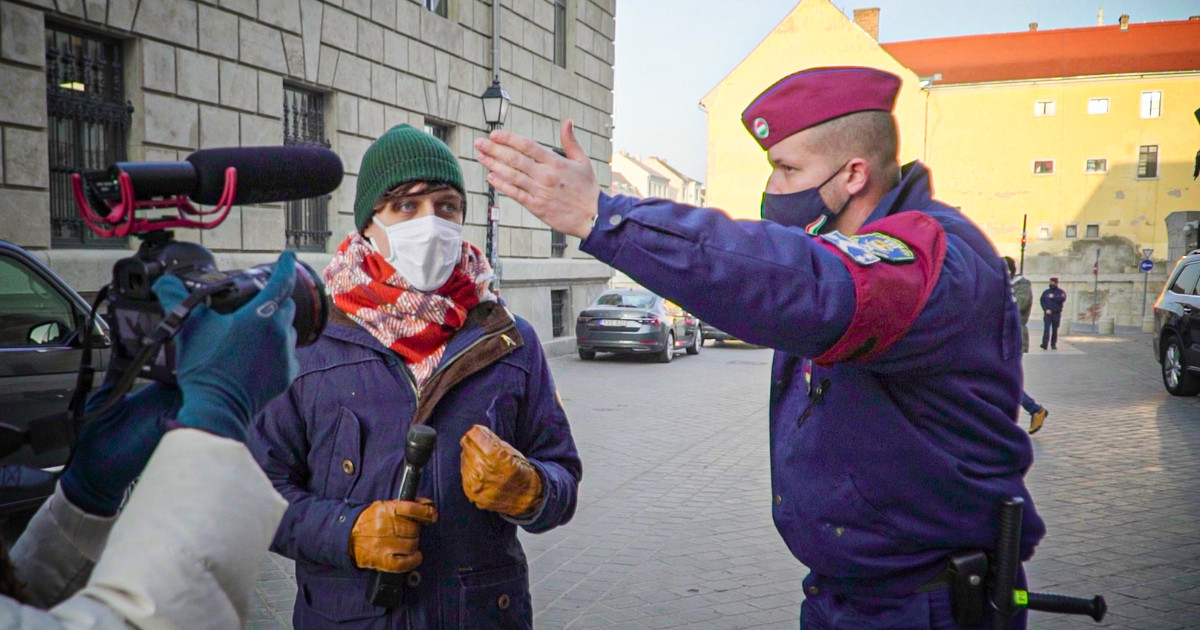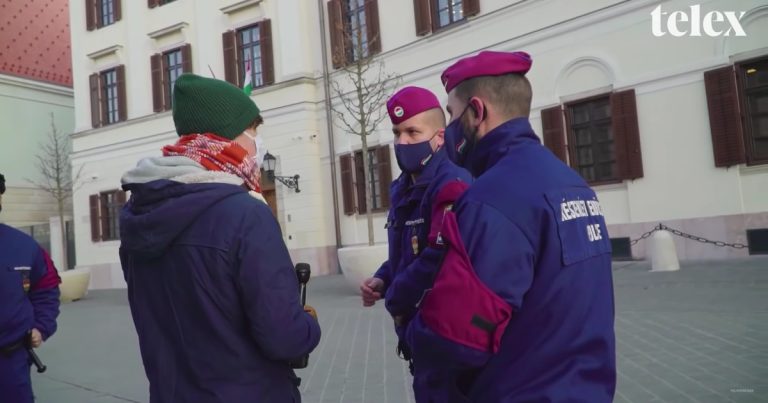
Unlawfully fencing off Hungarian PM’s office from Telex journalists: court rules in favour of press freedom
Journalists from the independent Hungarian news portal Telex were blocked from interviewing government officials arriving at a government meeting because the building of the Prime Minister’s office was fenced off by a police cordon. After an unsuccessful complaint to the police, the journalists secured a court victory today with the help of the Hungarian Helsinki Committee’s lawyer. In today’s ruling, the Metropolitan Regional Court in Budapest confirmed that the measure was unnecessary, disproportionate, and violated the journalists’ right to freedom of expression.
Translation is available for this content
Váltás magyarraIn December 2020, two journalists from Telex, Tamás Fábián and Máté Szilágyi, were doing their daily job: they were trying to interview members of the government about the Szájer-affair that was breaking out at the time. A top Fidesz MEP had been caught fleeing an illegal sex orgy during the covid-lockdown in Brussels. The journalists were on their way to the PM’s office in the former Carmelite Monastery in Budapest’s Castle district. The area around the building had become one of the last places where independent media reporters could directly approach and pose questions to cabinet members. They did not have much success at the building’s entrance because the interviewees didn’t want to respond to them. Soon enough, however, twenty policemen appeared and cordoned off the building’s entryway within a 50-metre radius, making it impossible for journalists to ask questions.

The journalists, with the help of the Hungarian Helsinki Committee, lodged a complaint with the Emergency Police, who rejected their complaint. Hence the journalists, again assisted by the HHC, took the case to court. In its first judgement, the court ordered the police to reopen the case because it had failed to even establish the facts of the complaint since no one had been questioned, not even the police officers. This was remedied in the summer of 202; however, both the Emergency Police and the National Police HQ, acting in the second instance, again rejected the complaint, claiming that the arrival of a protected person, the Prime Minister, had necessitated the use of a so-called “object security measure”. In its second judgement, taken in the summer of 2022, the Metropolitan Court ruled that the arrival of a protected person was not in itself a reason to close off the area and that the police had to justify why the closure was necessary and proportionate.
On 13 April 2023, after the third court hearing, the court found that the applicant’s claim was justified. The measure was unnecessary and disproportionate, and infringed on the journalists’ right to freedom of expression. The police justified the erection of the cordon with nebulous arguments. These included the arrival of a protected person and “an increased number of uncontrolled persons present in the area between the main entrance of the Carmelite Monastery and the former defence headquarters than in the previous period.”
However, the Telex video shows that the “significant number of uncontrolled persons” consisted of roughly five journalists doing their work in the public interest (HVG’s 3-person video crew was also on the scene, and were also heard as witnesses in the court proceedings). Moreover, the two police officers heard by the court gave contradictory answers to the question of why the crowd was not visible on the video footage: one claimed that they were out of the camera’s sight, while the other, who enforced the cordon, admitted that he only saw the five journalists on the scene.
The court established, on the basis of the video taken by Telex, that the “large grouping” referred to by the police was only the journalists and that there was no one else on the site. In comparison, the police only referred to the “prevention of infringements” as the justification for cordoning off the building’s entry.
However, these were not sufficient reasons to justify why it was necessary to close off the building. Therefore, the court found that the closure was unlawful and violated the journalists’ right to freedom of expression by preventing them from properly carrying out their journalistic work. Although the court was not in a position to rule on the real reasons for putting up the fence, it seems clear that the cordon’s sole original purpose was to prevent journalists from carrying out their work.
The Hungarian Helsinki Committee’s attorney representing the journalists, Gábor Győző said, “I am pleased that the court saw through the police’s obscure arguments and made its ruling applying the rule of law. I don’t envy the police since they were clearly following a political order (although they could not admit this during the proceedings), yet they had to hold their backs. Clearly, the only aim was to get rid of the journalists who were too curious and inconvenient for the authorities.”
Tamás Fábián, one of the Telex journalists, said, “The recent judgment is important for us because it shows that it is not only morally wrong but also not right from the point of view of the rule of law, to use fictitious, arm-twisting means to prevent us from asking critical questions to people holding public office. The police cordon is just a particularly spectacular example of the various ways in which the authorities obstruct our work and the provision of information to people on a daily basis. In many cases, we do not get answers from public authorities, we are not allowed to enter public institutions (be it hospitals or schools) to show the reality of the situation, and many politicians simply fail to answer our questions even when we ask them in person.”
It would be worth testing the judgement’s arguments in another complaint procedure if someone tries to get near the PM’s office building and is prevented by the cordons. Since this case, the neighbourhoods of public offices have been regularly closed down for bogus reasons. The cordon around the Prime Minister’s office symbolises the government’s attitude to press freedom and freedom of expression and of how the government, the Prime Minister and his ‘Friends-and-Relations’ are sheltered from real journalistic questions.